Choosing Your Brand Colors: A Beginner's Guide

Key Takeaways
A brand palette is a thoughtful range of colors that creates immediate association and links every visual component, from logos to websites to packaging. So keep your mains, secondaries and accent colors consistent to reinforce brand presence everywhere.
💫 Discover Your Complete Color Palette
Ready to discover all the colors that make you look radiant? Our comprehensive color analysis will reveal your complete personal palette - perfect for hair, makeup, and wardrobe decisions.
Take Color Analysis Quiz →Organize your palette: primary, secondary set, neutrals, accent, call to action. Give them each defined purpose and record hex and RGB values for consistent digital and print application.
Select the main color that represents your brand's core values and which specific emotion you want to evoke, then test it for contrast and readability. Use it boldly in logos, prime backgrounds and heroes.
Add depth and clarity without overwhelming the primary color by using secondary and neutral colors. Save bold accents and a separated call-to-action color to direct attention and provacidade clicks.
Build your palette with a simple process: define brand personality, research your audience and competitors, select a core color, layer supporting colors, and test combinations for accessibility. Collect input and revise.
Go deeper than just style and consider things like color psychology, cultural significance, and accessibility. Check in on performance periodically, and refresh your palette and style guide to keep it effective and inclusive.
A brand palette is the color identity of a brand for print and digital use. It directs logo usage, UI elements and photos, and maintains tone consistency across sites, apps and ads.
Your brand palette is a strong one with a primary color and supporting colors and neutrals — with hex, rgb and cmyk codes clearly listed. To establish trust, teams utilize contrast rules for accessibility and consistent use across touchpoints.
The following chapters dissect steps, tools, and examples.
📚 Recent Articles
What is a brand palette?
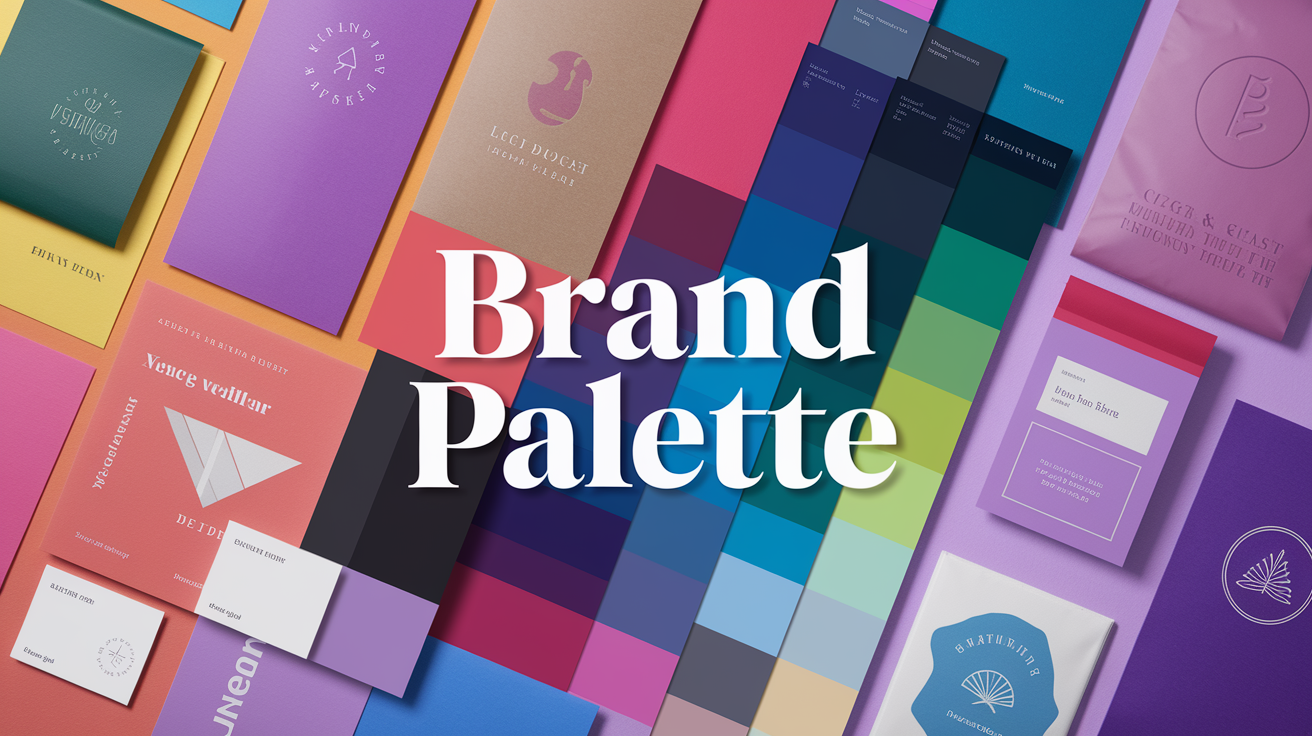
Here's what a brand palette (referred to as a color palette) is– the colors your brand uses on every touchpoint to display a consistent visual identity. It's a conscious decision, not a haphazard selection, and it directs design on screen, in print and on product.
Most palettes include three to four colors that work in harmony: a base color, one or two secondary colors, and a neutral. A nice split is 60% base, 30% secondary, 10% neutral. That straightforward rule assists teams scale color application in layouts, packaging and UI, so designs remain cohesive without guesswork.
Cohesive palette accelerates recognition. When individuals observe a particular color employed consistently, they establish an association in their mind between that color and the brand. Think the crisp red of an international soda brand or the rich blue of various finance apps.
Even if the logo is off-screen, those colors still signal who is talking. This compounding effect. A steady palette clears noise and focuses memory, that's why a quality palette tends to recall and trust. In my experience, I've found that when teams respect the palette on social posts, emails and slide decks, audiences perceive the brand as more trustworthy and transparent.
A palette connects so many pieces into a complete piece. It provides the logo with a steady platform, forms the web design's hierarchy, informs icon styles and establishes the mood for product shots and packaging.
For instance, a teal base might support the header, primary buttons, and box tops. Sand secondary can have hold subheads, cards and labels. A cool gray neutral can sit in the background, support body text, and just slice visual stress.
With this map, partners and vendors can get in sync quick, whether they print a poster or create a mobile screen. Good palettes mix feel with function. Colors are selected for their tone and effect as much as appearance.
Warm reds can imply excitement, tranquil blues can indicate loyalty, crisp greens commonly connect to wellness or the environment. Yet choice has to meet practical needs: enough contrast for legible text, tones that work in light and dark modes, and versions that reproduce well in print and on screens.
Offer codes for HEX and RGB for digital, and CMYK for print, so that your same hue shows true across formats. Maintain a brief style note illustrating primary, secondary and accent usage, and specify when to use each.
Test with actual mockups, measure contrast, and validate against universal accessibility guidelines. Care at this stage rewards in velocity, cohesion and brand power.
The anatomy of a brand palette
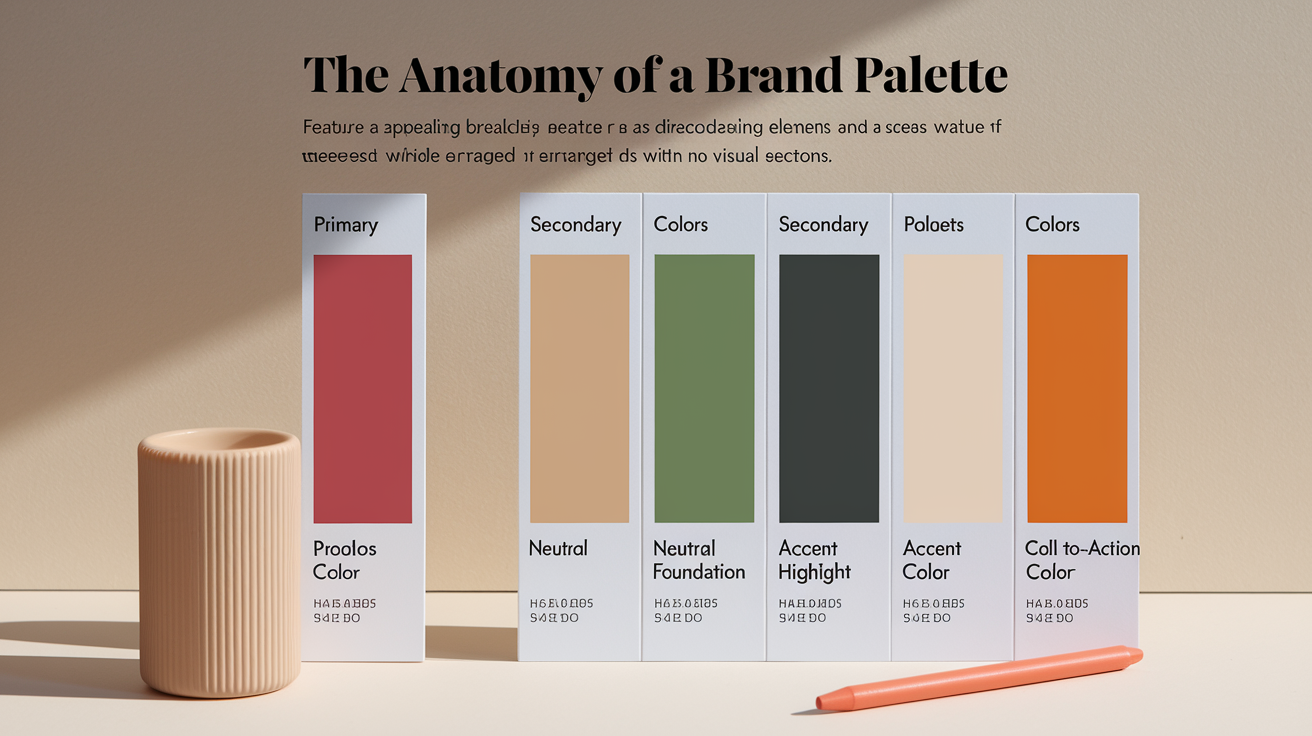
A brand palette is a compact system of around five colors that play together across screen and print. It straddles utility and emotion. A good palette is timeless, not trendy, and translates across many touchpoints without losing its voice.
A typical structure includes:
- Primary color (the base, often 60% of use)
- Secondary colors (1–2 that construct recognition with the primary)
- Neutral foundation (about 10% of space)
- Accent highlight (a bold pop for emphasis)
- Call-to-action color (optimized for clicks and clarity)
A good palette remains flexible, from micro mobile UI to jumbo print.
| Category | Example Hex | RGB | Intended Use |
|---|---|---|---|
| Primary | #2456E6 | 36, 86, 230 | Logos, key backgrounds, core UI surfaces |
| Secondary A | #19B394 | 25, 179, 148 | Banners, charts, cards |
| Secondary B | #FFB02E | 255, 176, 46 | Infographics, badges, tags |
| Neutral | #F3F4F6 | 243, 244, 246 | Page canvas, dividers, large background |
| Accent | #D93B6A | 217, 59, 106 | Highlights, links, icon emphasis |
| CTA | #F2442E | 242, 68, 46 | Primary buttons, prompts, alerts |
1. The primary color
The primary is the lead voice. It captures the essence of the mood and reflects brand values—calm and trusted, bold and innovative, warm and human. Choose a color that compliments the brand's purpose, then test for how it behaves on large expanses and small marks.
Utilize it for logos, primary backgrounds, heros, and premium assets. Shoot for around a 60% share in layouts to develop recall. Test contrast (WCAG AA/AAA) against light/dark neutrals.
2. The secondary colors
Secondary colors bring dimension and versatility. They should sit beside the primary, not duel it.
There are tons of ways to use them — for banners, for charts and cards and tabs, for graphic shapes. Keep them at low coverage so the main still dominates. Two secondaries is usually optimal, but three primaries can still feel unified when controlled by scale and spacing.
- Secondary A: #19B394 — backgrounds for product cards, data bars.
- Secondary B: #FFB02E — badges, empty states, onboarding steps.
3. The neutral foundation
Neutrals like beige, gray, tan and ivory soothe the page and enhance legibility. Apply them as background, copy, borders and table fills.
Maintain a light and dark set to back themes. This neutral layer, which should take about 10% of space — enough to 'frame', not attract attention.
Good neutrals let primaries breathe and keep a clean, steady pulse.
4. The accent highlight
Accents add zing. Restrict to 1 or 2 bold shades for highlights, links, and important icons.
They have to contrast with both the primaries and neutrals. Rotate accents by season or campaign without changing the foundational system. It keeps it fresh and still on-brand.
5. The call-to-action color
The CTA requires stand-out power and quick identification. Choose a shade that's different from the primary and secondaries, then try contrast on typical backgrounds, light and dark.
Apply it solely to buttons, links, and calls to action to condition user behaviors. Monitor click rate, conversion rate, and time-to-action, altering tone if metrics stagnate.
The psychology of color
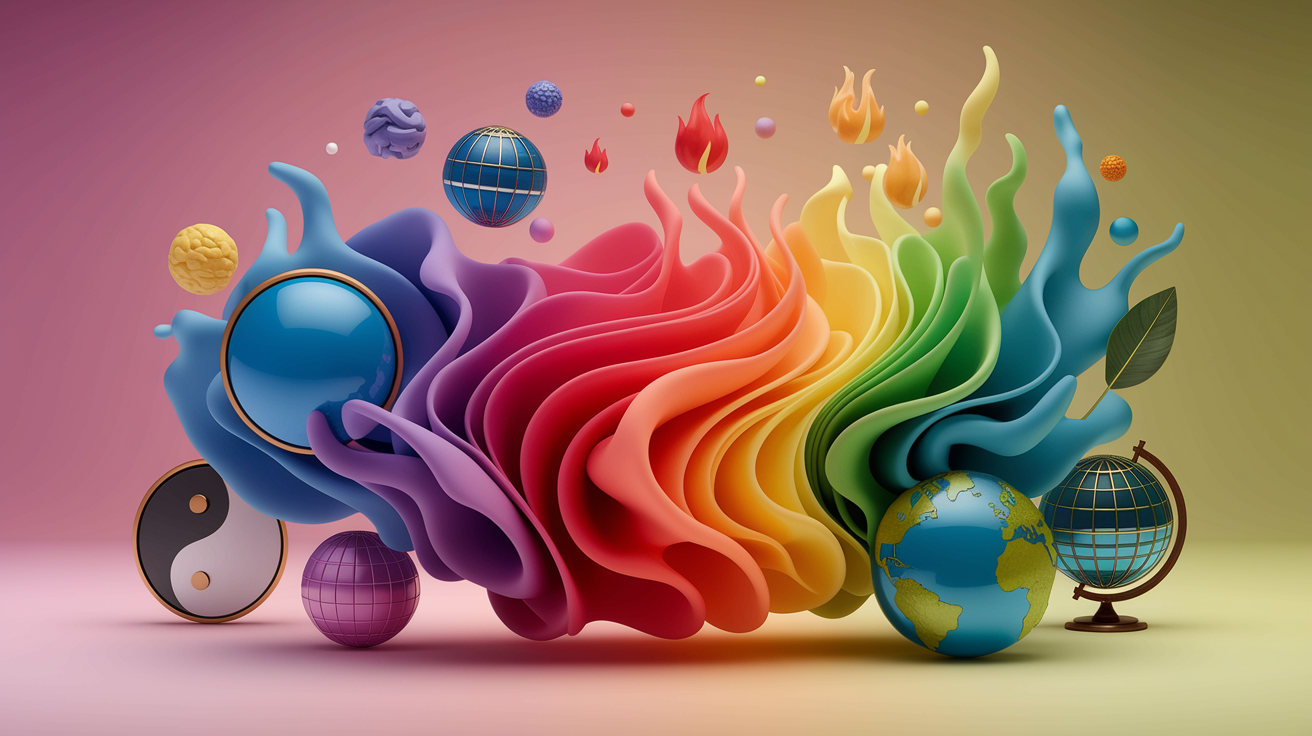
Before we've even read a single word, color palettes establish a mood. It forms initial impressions quickly, with research indicating up to 90% of an initial impression being based on main brand colors. Color drives recall and choice: it can raise brand recognition by up to 80%, and 85% of customers cite color as a key reason for picking one brand over another. A brand palette, after all, is not just paint; it is a lever for trust, action, and memory.
Analyze how different colors evoke specific emotions and influence audience perception and behavior.
Red grabs attention. It is the most emotionally intense color and can ignite urgency or passion or alertness. It tends to boost click rates and in‑store impulse behavior, but can mean danger if abused.
Blue leans calm and steady. It reduces perceived risk, therefore finance, health, and tech brands employ it to signal trust and transparency. Green, meanwhile, feels balanced and well, tied to nature and care—it's the easiest on the eyes because it requires no retinal adjustment, and the human eye reads the most shades of it—one reason green is used in night vision and UI states linked to "go" or "success.
Yellow delivers light and quickness while being eye-fatiguing at high saturation levels, which make it perfect as an accent to flag ideas and grab rapid attention. Purple occupies an interesting intersection—opulence and imagination, boy and girl—so it works for high-end, artistic, or cutting-edge narratives.
Black communicates formality and authority, white communicates room and spaciousness, gray absolves a system and adds equilibrium. Mixed hues add nuance: blends of blue and red, like purple or pink, layer trust with energy and can feel bold or soft based on tint and shade.
Match color choices to the brand's desired mood—such as blue for trust, red for excitement, or green for wellness.
Define the core mood first: trust, joy, focus, speed, care. Choose one lead color that delivers that promise in the primary use cases—site headers, app shell, key packaging—and establish 2-3 support colors for contrast and state cues.
For trust, begin with mid to deep blue, add soft neutrals, then a warm accent to enliven. If you're looking for excitement or action, use red as a pulse, not a flood — pair with dark neutrals and clear spacing. For wellness, construct with greens and gentle earth tones, rely on greens for body copy highlights or status as the eye breezes over them.
Recognize cultural differences in color meanings to avoid misinterpretation in global markets.
Color symbolism varies by geography and context. White can signify purity somewhere and death somewhere else. Red could represent love or luck or caution. Green could mean nature or politics.
Purple's association with luxury is typical, but spiritual significance is diverse. Personal history counts; no color has one truth. Test palettes with different audiences, localize highlights if necessary, and provide staff with direction on when to change a highlight without destroying the ecosystem.
Reference color theory and color psychology to guide impactful brand color palette decisions.
Use color theory to build a workable set: select a base hue for the brand promise, then craft contrast with complementary or split‑complementary accents for clarity at small sizes. Establish a tonal scale with tints and shades for states, charts and dark mode.
Verify contrast ratios to ensure legibility. Then test psychology in situ: run A/B tests on CTAs, watch dwell time, survey mood words, and note if the palette nudges the right action. Keep a simple rule: one lead hue owns identity, one accent drives action, neutrals carry content.
Building your brand palette
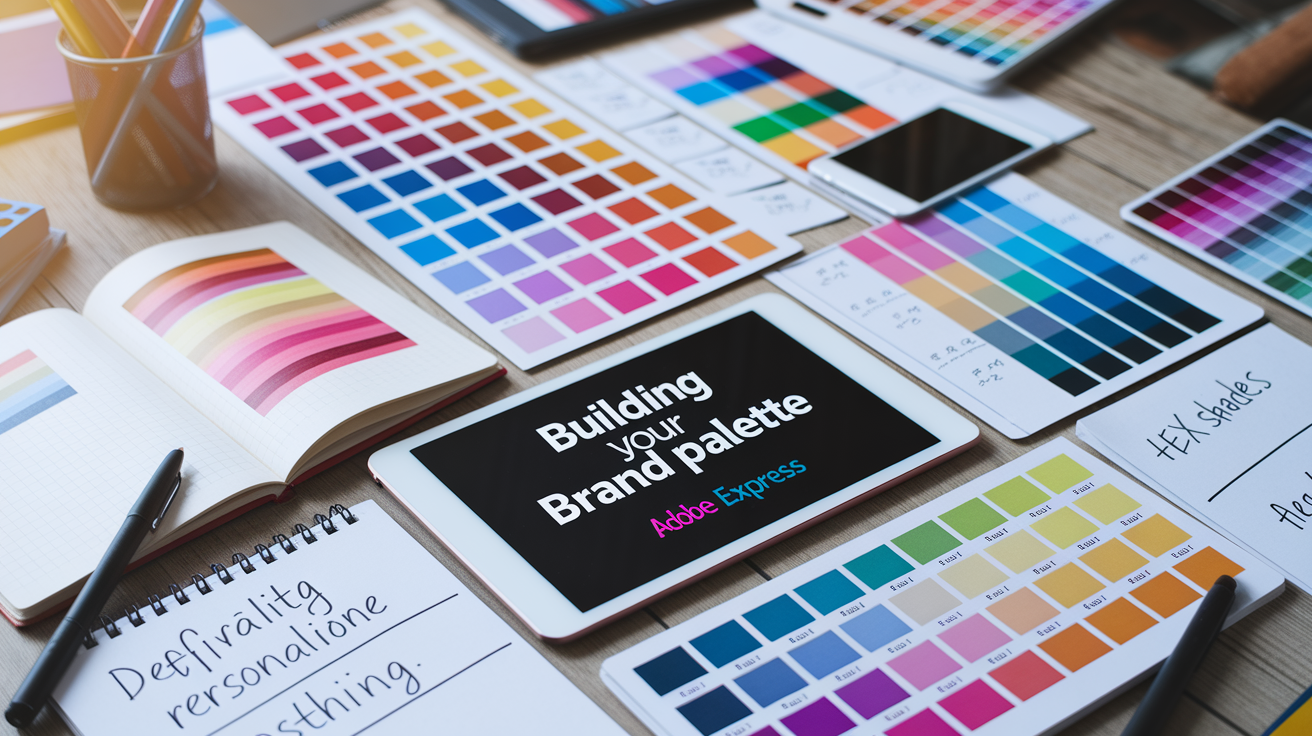
A brand palette is the tiny little set of colors you're using everywhere. Shoot for 4–6 colors with a signature hue, a complementary partner, a tint or shade, a light neutral (often white or off‑white), and a dark anchor.
Begin with a primary color that resonates with your brand, then construct a palette with sufficient tonal contrast to be effective on light and dark backgrounds. Keep hex and RGB codes close, test cross-platform and save final palette for convenient use.
Define personality
Begin with 3-5 adjectives that describe how you want people to feel. Match those with color cues that resonate for your market and values.
If you cater to a global audience, pick colors with deliberate purpose and strong contrast, not fads.
- Energetic: bright coral (#FF6F61) or electric blue (#0078FF) signal drive and action.
- Elegant: deep emerald (#0F6A4F) or charcoal (#333333) with soft ivory grounds.
- Approachable: warm teal (#2BAF9B) or muted mustard (#D4A017) paired with light gray.
- Bold: vermilion (#E23D28) or vivid purple (#6A2EFF) used sparingly as spot color.
- Calm: cool slate (#5A6B7A) or mist blue (#9EC5E8) with ample white space.
Don't go with default 'safe' blue + gray just because everyone in your industry does! Look for unique sets that still suit your purpose.
Research audience
Look at who you serve: age ranges, regions, and use cases. Be aware of lean, cool vs warm, and any cultural significance that might conflict with your messaging.
Map competitor palettes to identify gaps. If everyone else uses navy, think teal‑green or a sumptuous brown to differentiate yourself and remain believable.
Consider access requirements. Verify color‑blind safe combos and make certain value contrast, not just hue, conveys meaning.
Quick run some polls with sample screens. Have them ask what each color makes them feel and which combos read clearest!
Choose a core
Choose a main color that captures your brand's spirit, yet pops on a busy screen. Try it out in your logo, UI buttons and a fake package.
Verify in print (CMYK conversions) and digital (sRGB) so it remains consistent. Capture its HEX and RGB values for your style guide.
Build around it
Add two to four supporting colors: a complementary, one accent for calls to action, a light neutral for backgrounds, and a dark anchor for text.
Apply the color wheel and material design concepts for establishing harmony and roles. Build a mood board of actual scenes, products and UI shots.
Go for warm or cool paths first if that comes naturally. I like to construct 2 or 3 complete palettes and compare.
Put swatches together and name each color. Save tonal steps from light to dark for versatility.
Test combinations
Sprinkle your 4–6 colors across your page layouts, social posts, and ads. Try tints and shades with Adobe Express or a color generator.
Verify contrast ratios with accessibility guidelines, with an emphasis on readable text over light and dark backgrounds. Collect notes from designers and users, then adjust values, not just colors.
Save & share your final palette with HEX, RGB, and usage rules – download it for quick access & team alignment.
Beyond aesthetics: accessibility and culture
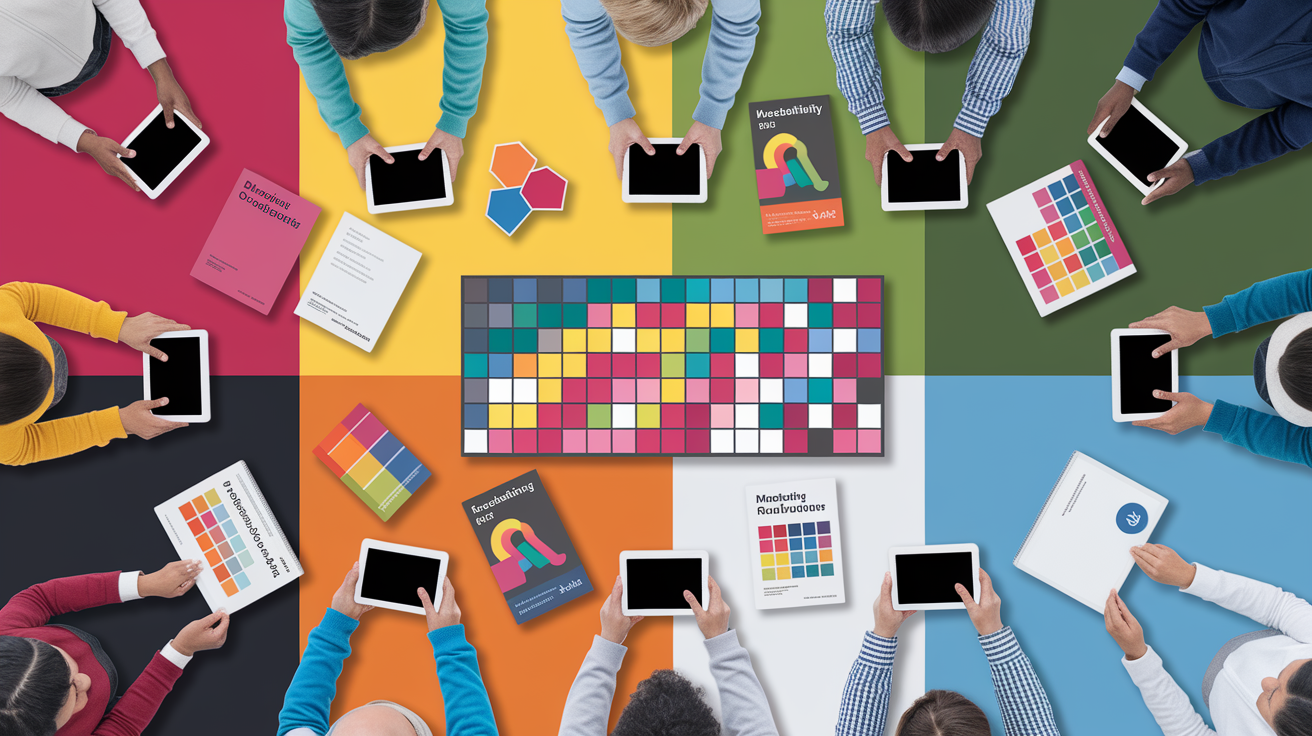
Color is more than brand appearance. It forms the way they read, feel and behave. An intentional palette enhances the user experience, amplifies impact, and delivers tangible outcomes. Aesthetics count, but they're only one piece.
We have to let accessibility, culture, and day-to-day use guide the system if we want trust and reach at scale.
Prioritize accessible color choices to meet web accessibility guidelines and ensure readability for all users
Aim for WCAG AA at minimum: a contrast ratio of 4.5:1 for body text and 3:1 for large text. Test key pairs: primary-on-white, white-on-primary, accent-on-gray, error-on-white. If one blue hero flops, switch up lightness or introduce a richer text color.
Employ tools that provide contrast measurement and preview states and failure flags. Don't depend on color only. Combine color with shape, text, or icons, so status, alerts, and links are obvious when color isn't. Set rules in your design tokens: minimum text size for each color pair, link states, focus styles with 2–3 px outlines, and a neutral base that stays legible on both light and dark modes.
Accessibility isn't a one-off check. It's a hands-on process that transforms abstractions into everyday habits in design, code, and content.
Recognize the impact of color on different cultures and adapt palettes for global reach
Colors mean things, but different things in different places. Red could represent luck somewhere and caution somewhere else. White may indicate innocence in one culture and bereavement in another.
While green might resonate with growth, nature, or faith in some regions. Such shifts may alter how users read calls to action or alerts or even brand tone. For worldwide scale, maintain a core neutral base, then localize the accents, the images, and the naming.
For a donation prompt, test a serene, high-contrast pair across markets rather than a symbolic color that might offend local sensibilities. Culture sprouts from thousands of micro decisions, so establish review milestones with regional teams, pilot copy and color in tandem, and record insights in a communal playbook.
Realness stems from reverence and hearing, not from a single, global color narrative.
Display accessibility considerations and adjustments for different types of color blindness
| Color Vision Type | Common Issue | Risky Pairings | Adjustments |
|---|---|---|---|
| Protanopia (red weak) | Reds look dark, dull | Red/black, red/green | Use deeper blues for CTAs, add icons, raise contrast |
| Deuteranopia (green weak) | Reds/greens blend | Red/green, brown/orange | Shift green toward teal, add patterns, underline links |
| Tritanopia (blue-yellow weak) | Blues/yellows confuse | Blue/purple, yellow/green | Move yellow toward warm orange, add borders and labels |
| Monochromacy | Hue cues lost | Any hue-only signal | Use strong light/dark pairs, shapes, text, and motion |
Inclusive design is generational work. Colors influence mood and behavior, and color psychology educates, but genuineness is the true advantage.
Create palettes that folks can actually see, believe in, use right now, anywhere, on any device, in any lighting.
Applying your brand palette
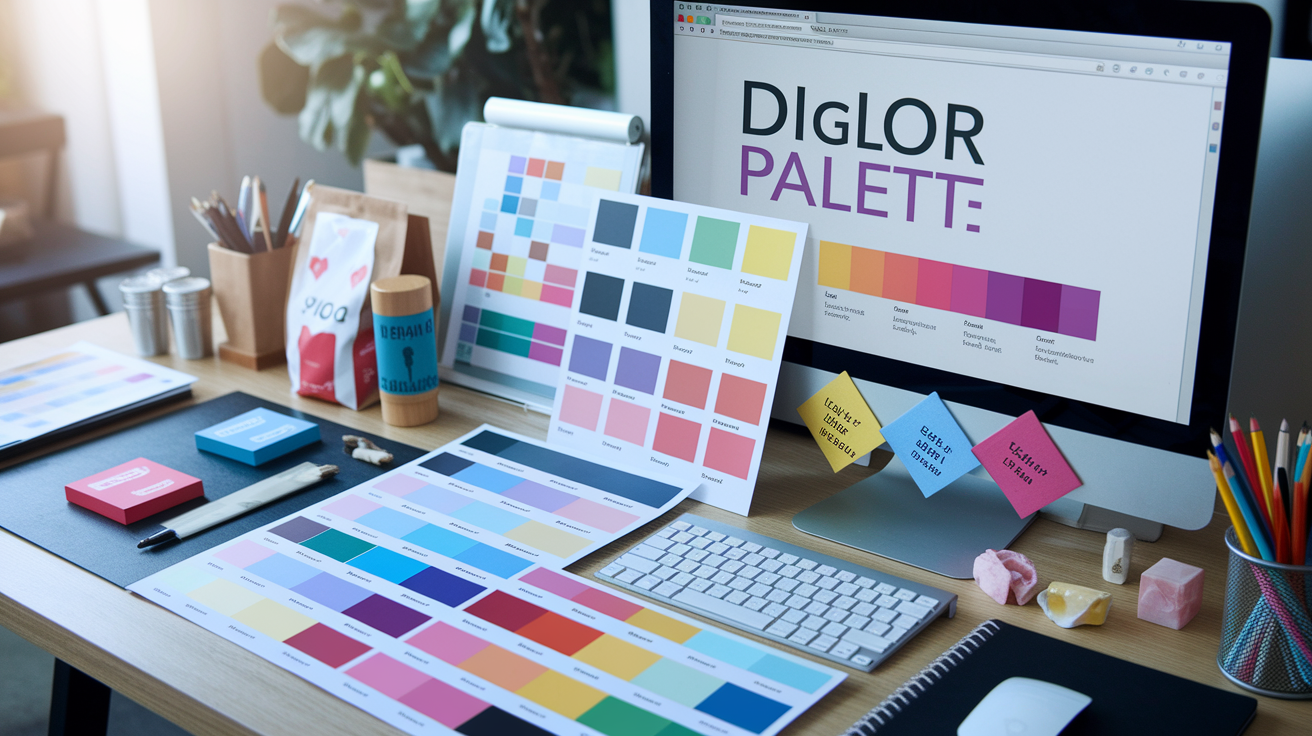
A distinct color palette transforms haphazard imagery into a consistent brand system. A tight palette of 3–4 main colors, supported by neutral colors like beige or light gray, creates a crisp foundation, establishes mood, and enhances user experience, rendering your brand easy to identify and remember on both screen and print.
Implement the brand palette consistently across all touchpoints, including website, social media, and packaging.
Map colors to roles so teams take the same action every time. Main color for logo marks and key headlines. Secondary colors for accents, pull quotes and charts. Neutral base for backgrounds and generous white space.
On sites, give a primary to top nav and key banners, a secondary to section tags and a strong contrast color to alerts. On social posts, maintain cover art and story highlights in consistent pairings so feeds remain stable.
For packaging, apply your identical ink codes on labels, boxes and tape. The shelf view should correspond to the site hero. If you sell in more than one region, sense-check color cues with local partners as colors can mean different things in other cultures.
Create a visual brand guide detailing color usage, combinations, and restrictions for all content creators.
Notate it so the look sustains as squads scale. Include color names, roles, and exact codes: HEX, RGB, CMYK, and Pantone if you print. Indicate nice and ugly pairs, like when the prime sits on a dark picture, or when to slide on the neutral canvas.
Add small, real scenes: a blog header, a mobile card, a slide cover. List explicit "don'ts," such as no tints under 20% on copy, no gradients on logos, no off-brand hues. Common library, and a quick reference sheet, assists when handoffs get rapid.
Use the palette to inform the design of buttons, backgrounds, icons, and other brand elements.
Connect function to hue. Primary buttons employ the main color with a high-contrast label. Secondary buttons have an outline or a toned color. Backgrounds remain neutral to let the content pop, though feature sections can use a soft tint of 5–10%.
Icons rest in one flat color. Stay away from rainbow icon sets that dilute recall. For data, one bold series color and soothing grays for the rest. Test contrast ratios for accessibility. Readable color pairs expand audience and credibility.
Regularly review and update the palette to reflect evolving brand strategy and design trends.
Conduct a quarterly audit. Examining performance data, cultural cues and new markets. If the brand shifts tone–say playful to calm–change saturation, not the entire set.
Try updates with users in critical locations to verify that the mood still reads correct. Make changes small, log them, announce with new codes and examples.
Conclusion
A defined brand palette takes the effort out of work. Teams are fast moving. Tools align. Pages smell neat. We want them to get the hint at first sniff.
Bold colors get things done. A quiet blue instills confidence. A vivid red can ignite a swift pivot. A rich green can suggest growth. Try every shade against actual screens and actual light. Verify text contrast. Check icons small. Maintain a record of hex codes. Short and clear names.
World use requires attention. Some colors have local significance. Swap tones if a market needs a tweak. Keep the essence intact.
Time to lock your palette. Select 5-7 colors. Assign roles. Create guidelines. Test them on a post, a deck and a shop page. Post your kit and go.
Frequently Asked Questions
What is a brand palette?
Your brand palette is the series of colors you use for a brand. It features primary, secondary and neutral tones. To establish recognition, mood and readability across print and digital touchpoints.
What colors should a brand palette include?
Include 1–2 primary brand colors, 2–4 secondary colors, and 1–2 neutral colors like beige or tan. Ensure a strong contrast for versatility and choose color palettes that resonate with your brand and audience, then experiment with them in real scenarios.
How does color psychology influence branding?
Colors evoke emotion and impression, with blue denoting trust, green representing growth, and red symbolizing energy. Choosing color combinations based on context, industry, and culture is crucial for effective user experience.
How do I build a brand palette from scratch?
Start with your brand strategy and audience by selecting a base color, then incorporate supporting and neutral colors to create a versatile color palette. Outline tints, shades, and tones while noting down hex values for consistency in your digital communications.
How can I ensure color accessibility?
To enhance user experience, ensure appropriate contrast between text and background colors, aiming for WCAG AA or AAA standards. Utilize tools like Adobe Express to test color combinations and offer substitutes such as icons and patterns, beyond just color.
Do cultural differences affect color choices?
Yes. Colors, including neutral colors and warm colors, mean different things in different regions. Research target markets to prevent clashes or misunderstandings. When in doubt, test with local users and tweak color palettes for regional campaigns while maintaining a strong brand identity.
How do I apply a brand palette consistently?
Develop straightforward usage guidelines for your digital color palette. Turn colors into roles, using main brand colors for CTAs, secondary colors for accents, and neutral colors for backgrounds. Remember to update your design systems, templates, and style guides.